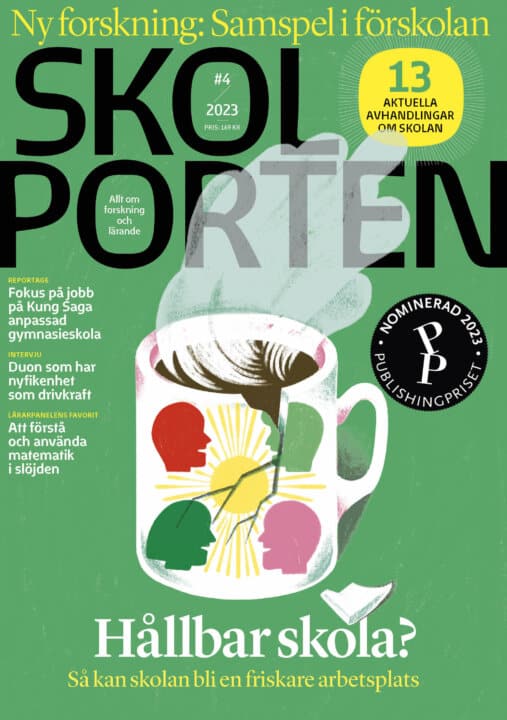Doing second language learning: a CA study of learning practices in Finnish-Swedish bilingual educational settings
Syftet med Fredrik Rusks avhandling är att samtalsanalytiskt beskriva barns och ungas (6–17 år) andraspråkslärande (finska eller svenska) i social interaktion i finländska tvåspråkiga (finsk-svenska) skolkontexter.
Fredrik Rusk
Professor Michaela Pörn, Åbo akademi Professor Fritjof Sahlström, Åbo akademi
Professor Arja Piirainen-Marsh, University of Jyväskylä
Åbo Akademi
2016-10-14
Doing second language learning: a CA study of learning practices in Finnish-Swedish bilingual educational settings
Doing second language learning: a CA study of learning practices in Finnish-Swedish bilingual educational settings
Using a social-interactional perspective on second language learning—founded on a conversation analytic (CA) perspective on social interaction as structured—this thesis investigates second language learning (Finnish or Swedish) in bilingual (Finnish-Swedish) educational settings. Employing CA, the three studies presented in this thesis provide detailed analyses of second language learning in-and-through interaction and discuss both technical and methodological implications of using video and CA in the study of learning in interaction. The aim of this thesis is to describe and understand practices used to perform social actions that participants orient to as second language learning. The focus is on practices that participants—themselves—orient to as doing second language learning and on how these practices are structured and sequentially organized in social interaction. In other words, learning is approached as practices that participants use to perform second language learning as situated actions. This thesis responds to the need for a better understanding of how participants actually do second language learning, and how it is structured and organized in talk-in-interaction. The empirical material consists of video recordings of various bilingual educational settings. These settings include participants’ (7–16 year-old children) everyday at school both in- and outside of the classrooms.
The first study discusses three approaches on data construction that emerge from the body of CA studies on learning in interaction and how they affect the subsequent analysis, results, and understanding of learning in interaction. The underlying interests of these studies influence data construction, which, in turn, affects possible analyses. There is considerable variation in the aspects that datasets focus on: an emphasis on setting, participant, or content projects the analytic emphasis. Hence, it is important to be aware of and address this relation between data construction and analysis. The second and third study built on these findings to analyze how participants orient to their own and other’s second language knowledge in social interaction. The studies employ CA’s framework of epistemics in interaction to capture participants’ management of the dynamic epistemic relationships regarding second language knowledge in the production and recognition of second language learning as social action. The second study focuses on situations in which code-switching is not used in an attempt to solve the second language learner’s problems of understanding the second language and current assignment. The aim is to investigate participants’ interactional management of one another’s knowledge regarding the second language—and the current assignment—when maintaining intersubjectivity and doing second language learning. The study shows that the use of the second language in resolving troubles with intersubjectivity may lead participants to act on diverse second language knowledge and diverse possible understandings regarding the assignments. The use of the second language may result in expanded epistemic discrepancies, as well as restrict doing second language learning on conceptual knowledge, for example, word-meanings. Instead, the participants agree on a minimally required epistemic balance as a way to move on. Building on the understanding of management of dynamic epistemic relationships in situations where participants orient towards doing second language learning, the third study investigates a specific practice— incongruent interrogatives—and how peers use this practice to perform second language learning. The findings indicate that participants—peers—use incongruent interrogatives to initiate instructional sequences and propose epistemically asymmetric positions as participants co-construct situated roles as second language teacher and second language learner as part of doing second language learning. Hence, all studies contribute to the development of an empirical analysis of second language learning as identifiable interactional practices that participants use to perform second language learning as action. These practices are not independent of other practices for maintaining intersubjectivity and meaning-making (such as repair/correction). The practices for doing second language learning and maintaining intersubjectivity are, instead, better understood as co-operating. Doing learning is concerned with instruction and a mutual orientation towards changing a participant’s knowledge of an oriented-to learning object, whereas the management of epistemic relationships, repair, and other practices for meaning-making are resources for participants to establish and maintain a shared understanding of their joint activities, including learning.
In sum, the thesis contributes to the development of using CA for the analysis and documentation of participants’ methods and practices for doing learning as observable interactional phenomena that participants actively relate to.
Relaterade länkar

Undervisa i artificiell intelligens
 Gy–Vux
Gy–Vux 







